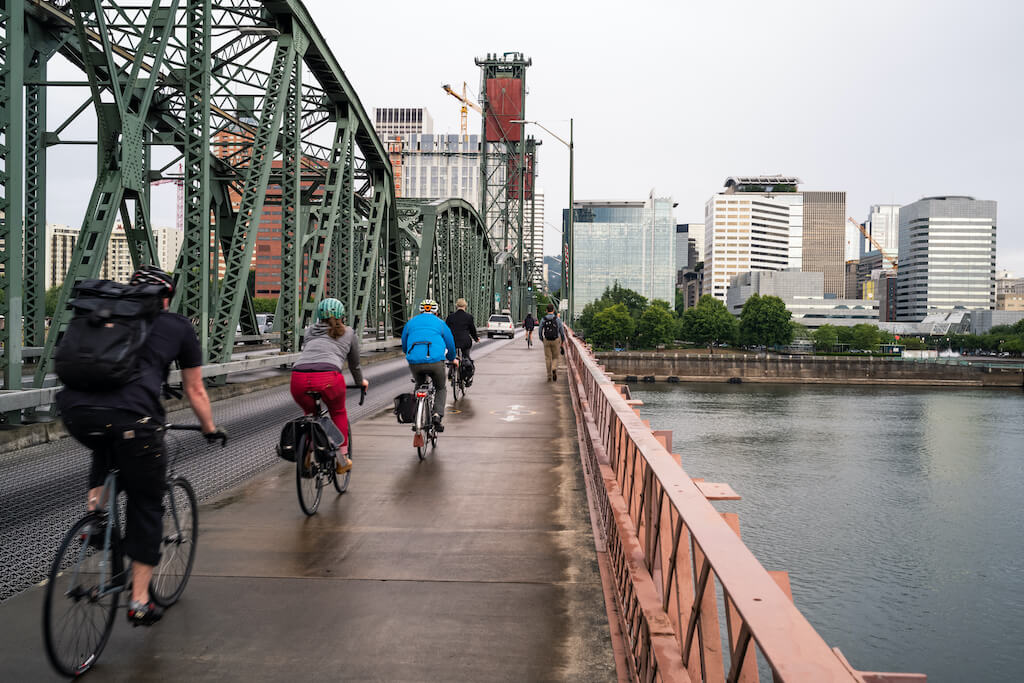Autumn Gear Guide
Find inspiration in our Gear Guide that will keep you out on your bike through wind or rain.
Download NowPandemic-induced cycling growth is showing no signs of cooling down, as a recent report reveals a surge in the number of daily bike trips across major U.S. cities between 2019 and 2022. The data, sourced from mobility data firm StreetLight Data, utilizes GPS and location data to track urban transportation trends. In a broader perspective, […]
Pandemic-induced cycling growth is showing no signs of cooling down, as a recent report reveals a surge in the number of daily bike trips across major U.S. cities between 2019 and 2022.
The data, sourced from mobility data firm StreetLight Data, utilizes GPS and location data to track urban transportation trends.
In a broader perspective, the nation witnessed a remarkable 37% increase in the average daily bike trips over the same three-year period.
Unsurprisingly, the majority of this cycling growth is concentrated in and around large urban centers, accounting for 77% of all cycling activity in the U.S. in 2022, compared to 72% in 2019. In metro areas with over five million residents, bike activity experienced a minimum growth of 25% between 2019 and 2022.
The spike in urban cycling can be attributed to the COVID-19 pandemic, where people sought alternatives for commuting and exercise without the risk of exposure. This surge was further fueled by the popularity of urban bike-sharing programs, including Citi Bike in New York, Capital Bikeshare in Washington, D.C., and Divvy in Chicago.
Many cities have also invested in improving their cycling infrastructure, though they now face the challenge of accommodating a surge in e-bike usage, which doesn’t always align seamlessly with traditional bike lanes.
New York City stands out as the front-runner in this cycling renaissance, with a 43% increase in trips per 1,000 people in 2022 compared to 2019. This growth may be partly attributed to the rise of “deliveristas” zipping through the city to satisfy Grubhub and Uber Eats orders.
The growth in New York City is impressive, and there has been significant investment in safe bicycle infrastructure, but is it enough?
According the advocacy group Transportation Alternatives, 2023 is looking like it will be the worst for bicyclist deaths since 1999 with 25 people tragically losing their lives so far.
There is a surge in cyclists taking to the streets, which is a great thing for any city. But, Danny Harris, executive director of Transportation Alternatives, says Mayor Eric Adams needs to do more to keep them safe.
“Mayor Adams has the tools to end traffic violence and yet he continues to put politics over people. We’re facing a crisis of traffic violence on our streets — 183 New Yorkers killed in traffic violence and the deadliest two years for bike riders under any mayor in recorded history,” said Harris. “Announcements alone are not infrastructure. Promises won’t keep bike riders safe – but completed, fully-protected bike lanes will. The time to act is now. Fast track the Streets Plan without any more delays or excuses. Lives depend on it.”

Eastbank Esplanade in Portland
Portland, Oregon, on the other hand, experienced a slight decline in cycling activity, with four fewer trips per 1,000 people. This might seem surprising for a city with a strong cycling culture, but it had less room to grow compared to cities with smaller cycling scenes.
The drop in Portland coincides with the city’s own internal report by its department of transportation that comes to the same conclusion. Local bicycle advocates know the numbers can rebound, but it will take investment from the city in the type of infrastructure that promotes growth in cycling.
Kiel Johnson, chair of BikeLoud PDX, says that Portland has failed to make bicycling a convenient option, which is the goal of all good bicycle infrastructure.
“If you look at cities where cycling numbers have been increasing relative to car trips, convenience is the number one reason people opt to ride their bike,” Johnson says. “Look at page 9 of the Copenhagen bicycle account for 2022. Fastest, easiest, and most convenient are all the top four reasons. This is the same in surveys in the Netherlands. For trips that are three miles or less, we need to make riding a bicycle the obvious choice. Instead, we have built relatively safe routes through our neighborhoods on our ‘neighborhood greenway’ network that zig zags you around and are hidden for most people.”
Despite this plateau in 2022, with approximately nine million total daily bike trips on average, maintaining these high levels is seen as a victory for cycling advocates. It suggests that the COVID-induced bicycle boom is here to stay as part of the post-pandemic normal.
According to StreetLight’s report, the lack of growth in 2022 serves as a warning, emphasizing the need for continued investment in safety-focused active transportation infrastructure to reinvigorate growth, particularly to support community connectivity and recreational access.
This latest data underscores the enduring popularity of cycling in America’s cities, with urbanites continuing to embrace two-wheel transportation for both practicality and recreation.
Find inspiration in our Gear Guide that will keep you out on your bike through wind or rain.
Download Now
Leave a comment